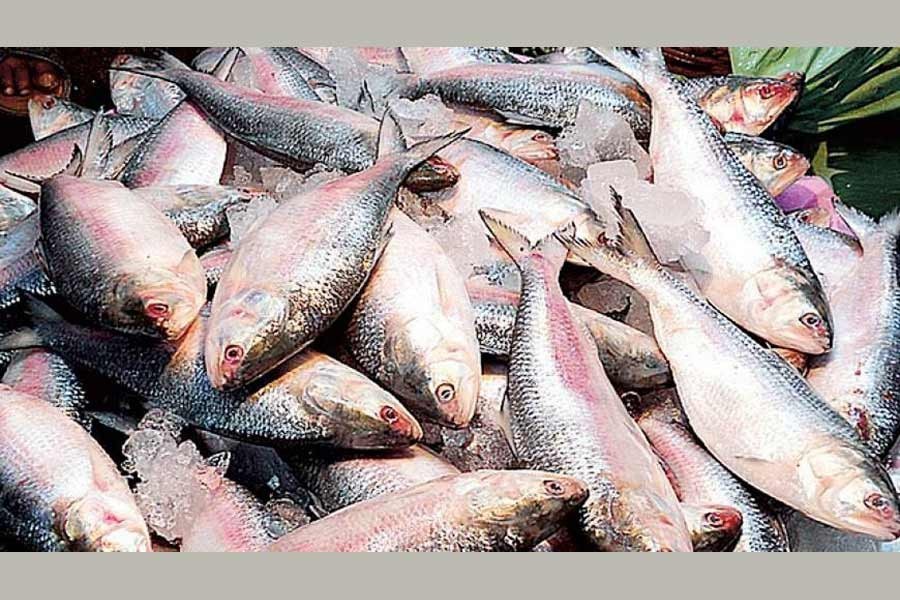The maximum sustainable yield of scrumptious silvery hilsa may reach 0.702-million tonnes from the current 0.565-million tonnes, according to a latest study.
"Our two-year research finds the standing biomass of hilsa fish is now 0.402-million tonnes in the country's water bodies," says Bangladesh Fish Research Institute (BFRI) director general Dr Yahia Mahmud.
The biomass is the quantity of living organisms in a given area or an ecosystem at a given time.
"Considering the present biomass, hilsa's maximum sustainable yield should not be more than 0.702-million tonnes a year or it could affect future production and habitat," adds Dr Mahmud.
He was addressing a discussion with the Bangladesh Agricultural Journalists Forum (BAJF) hosted in the BFRI auditorium in Mymensingh on April 01.
Dr Mahmud says more than 0.1-million fish has been examined across the hilsa habitats in the past two years to make the standing biomass. Further research is ongoing over the issue, he cites.
According to the expert, the maximum annual hilsa output climbed to 0.565-million tonnes in fiscal year 2021. "We can produce an additional 0.137-million tonnes than the current production level."
Despite having its high price range round the year, Dr Mahmud says, hilsa sales do not decrease.
He suggests raising awareness and enforcing law strictly to prevent the fishing of jatka (young hilsa) and brooding hilsa to attain the desired production.
Dr Mahmud says his institute has achieved success in artificial insemination of 31 out of 64 endangered fish species of the country.
It has also a live gene bank at the institute's Mymensingh headquarters to conserve native fish and to ensure their field-level experiments.
The delicious hilsa sells at Tk 700-1,550 a kilo based on size across the country, according to kitchen market sources in Dhaka.
Bangladesh is the world's largest hilsa grower with an 86-per cent share in the production.
Hilsa contributes more than 11 per cent of total fish production here.
The price trend of the total fish market largely depends on hilsa trading, said agri-economists.
According to fisheries department, the country's hilsa conservation programme, taken one-and-a-half decade ago, helps attain more than 90-per cent growth in production during the period.
Under the programme, fishing remains banned in six major sanctuaries across the country during brooding and growing period of hilsa.
tonmoy.wardad@gmail.com


